 |
|
A mandala is a "sacred circle"
containing symbols and images. It is sacred because it represents wisdom
from the depths of its creator. Mandalas have been used by many cultures
for centuries as a form of prayer, a graphic representation of inner feelings,
or a
healing tool.
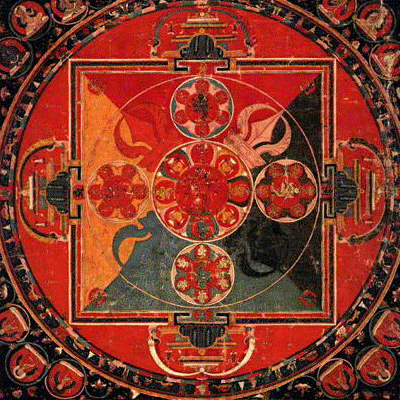
Along with European stained glass rose windows in cathedrals
and
native American prayer wheels, Eastern culture mandalas stem from the human desire for contact with the sacred. Most
people make mandalas on paper while Tibetan monks make theirs
in sand that is later scattered.
|
|
read more
|
|
 |
 |
| www.dreamsedona.com |
Designated by USA Today as America's most beautiful city,
Sedona, Arizona offers far more than scenic wonders. Many also consider
Sedona America's premier spiritual vacation destination. Getaways have
always been about rest and rejuvenation. Now many travelers seek the
additional benefit of spiritual reinspiration.
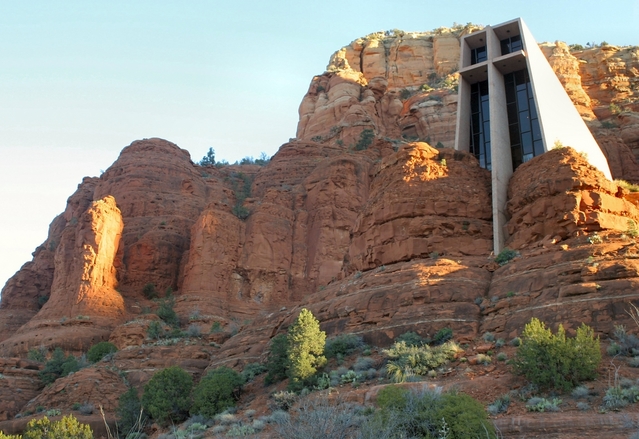 People of all
faiths have long found those effects in Sedona, Arizona which has often
been called an open air cathedral. The majestic red rock scenery and
year round evergreen vegetation have tangible regenerative power.
Sedona's spectacular hiking trails and overlooks provide unlimited
opportunities for inspiration, prayer, and contemplation. Within
minutes visitors can go from the wonders of wilderness to the awe
inspiring vision of the Chapel of the Holy Cross, a soaring chapel
built into the red rocks. People of all
faiths have long found those effects in Sedona, Arizona which has often
been called an open air cathedral. The majestic red rock scenery and
year round evergreen vegetation have tangible regenerative power.
Sedona's spectacular hiking trails and overlooks provide unlimited
opportunities for inspiration, prayer, and contemplation. Within
minutes visitors can go from the wonders of wilderness to the awe
inspiring vision of the Chapel of the Holy Cross, a soaring chapel
built into the red rocks.
The deep harmony of nature awaits
hikers of the West Fork Trail. As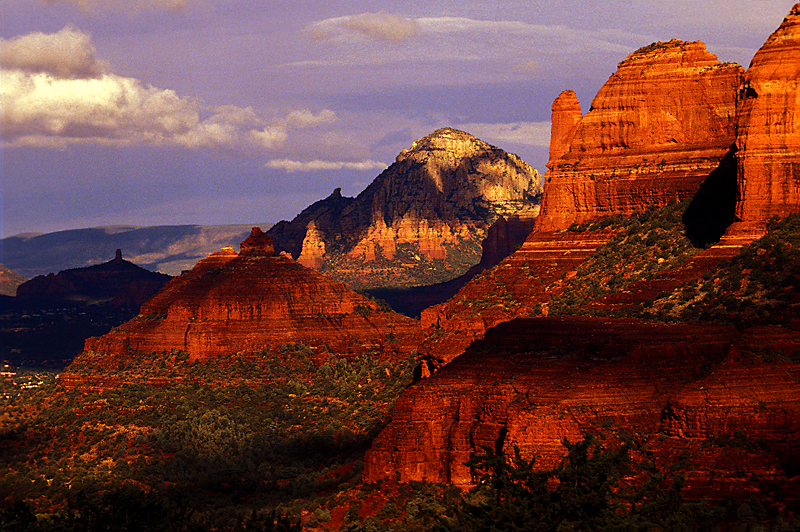 it weaves along the west fork of Oak
Creek, more species of vegetation abound than in any other location in
Arizona. From the benches at the Chapel of the Holy Cross you can feel
your Soul soar out to the magnificent red/orange vistas of Cathedral
Rock, Courthouse Rock, and Bell Rock. it weaves along the west fork of Oak
Creek, more species of vegetation abound than in any other location in
Arizona. From the benches at the Chapel of the Holy Cross you can feel
your Soul soar out to the magnificent red/orange vistas of Cathedral
Rock, Courthouse Rock, and Bell Rock.
Internationally known for
the uplifting power of it's Vortex meditation sites, Sedona also offers
the full range of spiritual explorations and metaphysical services. A
wide range of readers, healers and spiritual guides are easily
accessible to Sedona AZ visitors. A five to fifteen minute drive can
connect the seeker with a variety of metaphysical bookstores and
centers where spiritually based massage, readings, and other services
are all available.
What makes Sedona additionally unique is that
most of its Vortex meditation and prayer sites are interwoven with the
real world of a small town. As a result, seekers get insights for truly
living their spirituality in their daily life. Rather than having to
escape from civilization to find peace, visitors discover that Sedona's
splendor gives them a sense of awe and harmony they can carry back home
with them.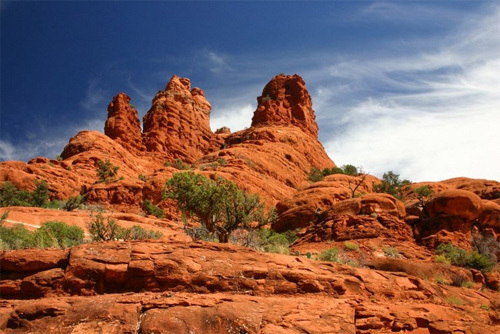
The wide range of Sedona hotel, RV, and camping
options in Sedona and the Verde Valley makes visiting affordable for
all budgets. Travelers can find accommodations ranging from economy
motels to the finest of Sedona luxury resorts.
Dining selections
at Sedona restaurants are similarly diverse. With choices ranging from
cafes to health food deli's; Mom and Pop ethnic restaurants to world
class gourmet cuisine, no palate will go unsatisfied.
|
|
 |
| from CookingLight.com |
How to Choose: Pick a squash that is rock solid and heavy for its size.
Its skin should be matte. A shiny finish is a sign that the squash
wasn’t ripe when it was picked. Look for an intact stem, which will
help slow down the loss of moisture.
How to Store: Protect butternut squash from light and heat by storing it in a cool, dry place (not in the refrigerator).
Shelf Life: Stored properly, a whole squash will keep for a month,
making it useful to have on hand for impromptu meals. A cut uncooked
piece wrapped in plastic will last for up to two days in the
refrigerator.
Best Uses: Roasting butternut squash at 400º F renders it sweet and
tender. Cook it in the oven, halved, seeded, and cut-side down (to keep
it from drying out). Scoop out the flesh and mash with a little butter,
nutmeg, salt, and pepper. Butternut squash can also be simmered or
sautéed.
|
|
read more
|
|
 |
| Include your contact information below |
#my_firstname# #my_lastname#
#my_picture#
#my_phone#
#my_website#
(add
your special offer or other information here)
|
|
|
 |
|
Updates
|
![]()
|
|
Include
your updates here. This information can change month
to month or remain static.
#my_firstname# #my_lastname#
#my_picture#
#my_phone#
#my_website#
|

|
|
Featured Spirit Cards
|
|

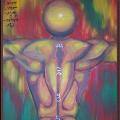
|

|
|
Find chocolate that's good for your health—and the planet.
|
YogaJournal.com
By Christie Matheson
It’s no longer news that dark chocolate is good for our health: It’s
even got 14 times as many antioxidants as broccoli. But its virtue goes
only so far if it isn’t produced sustainably. Conventionally harvested
cacao (the plant from which chocolate is made) is second only to cotton
in the amount of pesticides used to grow it, according to the Pesticide
Action Network. And it’s often grown in areas stripped of rainforest
flora and fauna. What’s more, standard-style cacao farming has been
linked to child labor, slave labor, and other harsh labor practices,
says Nicole Chettero,
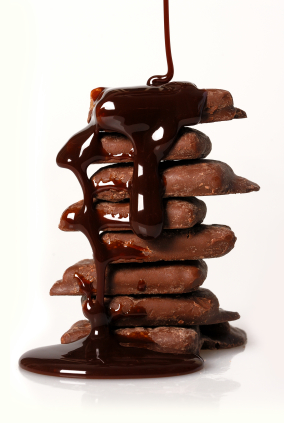
a spokesperson for TransFair USA, the only
independent third-party Fair Trade product certifier in the United
States. Fair trade chocolate, by contrast, comes direct from small
farms whose practices don’t violate human rights. “Fair Trade
certification guarantees that no slave labor is used,” Chettero says.
“The gold standard is to look for chocolate labeled Fair Trade
Certified and organic.” Not available in your local store? “To increase
supply, increase demand—ask for it,” Chettero advises.
If you
can’t find treats labeled as both fairly traded and organic—the push
for sustainable chocolate is somewhat recent—look for at least one of
those designations. Phrases such as “pesticide free,” “Rainforest
Alliance Certified,” and “ethically traded” also suggest that a company
is making an effort to use cacao harvested in a humane and eco-friendly
way.
|
|
 |